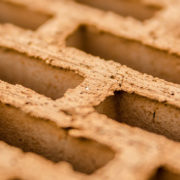Why We Build LEED Buildings
In the eight years since I became LEED accredited in 2002, green building has gone from the interest of a few to business-as-usual for most. Indeed, if it’s not all that people in the building and development communities are talking about, it is certainly a large part of the conversation. Every architect, every builder, every manufacturer and supplier and nearly every owner wants to know how to be green, if not certified. It has become big business.
Though it seemed that it might be a market advantage for certain clients, it was certainly not significant in 2002. This was not my primary purpose in becoming LEED accredited. I obtained my LEED accreditation because I was interested in the goals of, what seemed then, a movement of a few to change the behavior of many to affect needed change related to planning policies, public health and the environmental issues of resource conservation and restoration. LEED was being embraced by environmentalists AND business. It identified an issue and proposed a solution. Who knew how ubiquitous this would become.
In spite of criticisms leveled at the rating system, it cannot be denied that LEED has transformed not only the building industry including manufacturers, architectural design, construction practices, but other industries like the paper industry where recycled content and FSC certification is the norm, hospitality where re-using your sheets and towels have become the norm, energy where efficiency and renewable energy sources are always a consideration, and a host of others. It stimulated the discussion of sustainability in every corner of every discipline so that innovation is occurring everywhere. And yet, there still is so much to be done.
While LEED had been a catalyst on the one hand, it has been an inhibitor on the other. For some developers, institutions and designers, we seem to be losing sight of the larger goals in pursuit of our LEED certifications. We all want to get those points so we can be Gold or, maybe, Platinum certified. It’s not a bad thing but, it’s not the goal.
Let us remember why we are doing this in the first place. The context for green building certifications is sustainability. The words, Sustainability, Green, Eco and others have become words so commonly used these days that they barely have meaning any more. If everyone is as sustainable and green as they claim to be, our climate and environmental problems would be over.
Unfortunately, they are not.
Every day, I remind myself why I do what I do. As a sustainability consultant I assist projects, companies and communities articulate, pursue and attain their sustainability goals. While we are proud of our certifications and recognitions that we achieve, we do this together to help make our society and our planet more sustainable. The well known and often cited definition of sustainability is “…meeting the needs of the present without compromising the ability of future generations to meet their own needs...” a simple statement but an enormous challenge when one thinks about it.
Currently, an expanding and increasingly affluent world population whose consumption rate is growing rapidly is causing a global loss of natural lands, increased scarcity of resources, depletion and degradation of water supplies and changes in climate that are pressing our collective comfort zone. That is to say that these impacts are affecting the daily lives of people all over the planet. In Maryland, my home state, we face challenges of stressed water supplies in several of our counties, degradation of Chesapeake Bay water quality and its fisheries and a growing population that challenges us to question how we will meet future energy needs in the State.
Many here and others worldwide are seeking ways to live within a smaller environmental footprint to preserve a quality of life for future generations and, some would say, to preserve the planet itself. These challenges will not be met by designing and building Gold and Platinum buildings, no matter how many. The opportunities that we provide our children “…to meet their own needs…” could very well be challenged by the decisions we make today.
We increasingly sense the interdependency of our actions. What we purchase and consume, where we live, what we throw away, our national security, our public health and, not least of all, the quality of our environment are all linked. In one of the largest migrations from the countryside in human history, more than 50% of the world’s population now lives in cities and towns. And yet we, in the developed and developing world, seek to live increasingly “in harmony with nature.” What does it mean to “live in harmony with nature”? Ironically, indigenous people who have lived in harmony with nature for centuries are not considered to be “civilized.” They consume little and expand their “economies” and territories little. They are the antithesis of us. Do we think we want to be like them? We are, in fact, infringing on their habitats and threatening the survival of their societies as much by our pollutants as by our physical encroachments.
What do we mean when we, industrialized societies, seek to design our environments and products in a manner more integrated with nature, more holistic, more “green?” The term “integrated design,” long a part of the sustainability lexicon, requires us to understand that the thing we are making is part of an inter-dependent system. If it is a product, there are material and energy flows in every aspect of its creation; material acquisition, transportation, human resources, processing, manufacture, packaging, advertising, distribution, sales, obsolescence and recycling. In the case of architecture, the building or development engages its place environmentally, socially and economically. It effects our water, air, ecology, health and all these affect our economy.
What is connected to what? It’s easy to make the connection between the way we plan our communities and the societal increase in obesity, planning and energy use, pollution and habitat disruption, pollution and health, species loss and environmental degradation. One could go on. When taken together these causes and effects make one pause.
We may never know all of the connections within this complex web of life but we have made ourselves the canaries in our own coal mine! According to the National Cancer institute, 41% of all children born today will be diagnosed with cancer within their lifetimes.
Some people are afraid of what they will have to give up in order to be more sustainable. Our over abundance is not only bad for the planet, it is bad for us!
But, just as we have created these conditions, we can change them.
In an integrated design, we understand that even urban environments that are fully developed from property line to property line are part of a watershed and, possibly, a migratory path. It has water and energy income and out flows. Though it may not function as it once did as a natural environment, we have to ask ourselves whether it could be restored to do so. As a designer, how do I take advantage of the climatic cycles? What is the potential energy income from sun or wind or other sources? What do I do with rainwater that falls here? What do I do with the waste streams that are created by this development? How can I expand natural habitat?
What would nature do?
Designing a project that addresses these questions is very different than designing a project that simply seeks to achieve aesthetic, economic and compliance goals. The integrated approach is much richer, more rewarding and more meaningful.
In 1992, Severn Cullis-Suzuki, a twelve year old girl, addressed the Earth Summit in Rio de Janeiro, Brasil. She stood before the leaders and representatives of 172 governments to tell them that, as a child of twelve, she was afraid of the destructive nature of their actions (or inactions). She said, “…even in kindergarden, you (adults) teach us how to behave in the world; You teach us not to fight with others, to work things out, to respect others, clean up our mess, not to hurt other creatures, to share, not be greedy…Then why to you go out and do the things you tell us not to do?… We are your own children. You are deciding what kind of a world we are growing up in…. Parents should be able to comfort their children by saying ‘everything is going to be alright. It’s not the end of the world and we’re doing the best we can.’ But I don’t think you can say that to us anymore.”
Ms. Cullis-Suzuki’s challenge is why I do what I do. Severn Cullis-Suzuki is now 30. Let us show her and all of our children, through our individual efforts and those of the companies where we work, that the canaries are safe in this mine, that we are indeed doing the best that we can, that it’s not the end of the world and that everything is going to be alright.





